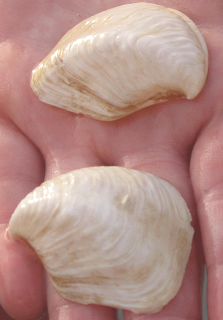

 (click on any photos in this post, or others, to see an larger view)
(click on any photos in this post, or others, to see an larger view) |
| The crowd gathers to watch an early box core deployment -- leaning over the starboard side (and over the long core). |
Box coring allows us to recover a large block of sediment from the sea floor, hence to examine near-surface sediments, sedimentary structures, and biology (worms, bivalves, sea stars, corals, and more have been found in the cores from this cruise). Box cores also allow us to collect large samples with which we will examine the biology and chemistry.
 |
| The box corer. |
The box core is a relatively simple device. This is a good thing -- especially in difficult-to-core sediments.
Sci2 really gets into his box cores. His technique is muddy and messy, but it works. Here's how it goes:
 |
| First, push 4" and 6" tubes into the core and take samples of the surface sediments for microbial analysis. |
 |
| Next, use ropes to lift the box away from the sediment. |
 |
| Once the top is removed, the oxidized top portion of the sediment is easy to see. |

|
| Here's a close-up of the contact between the oxidized and reduced zones in the box core sediment. |
 |
| After admiring the cross section of near-surface sediment, remove the excess sediment from around the sample tubes. |

|
| Once they are clear of sediment, the tubes can be removed . . . |
 |
| . . . and capped. |
 |
| The tubes of sediment are put aside for later use. Some will be archived and others will be sub-sampled for organic and foram analysis. But first, there is cleaning up to be done. (Sci2's students are very good at this!) |














No comments:
Post a Comment